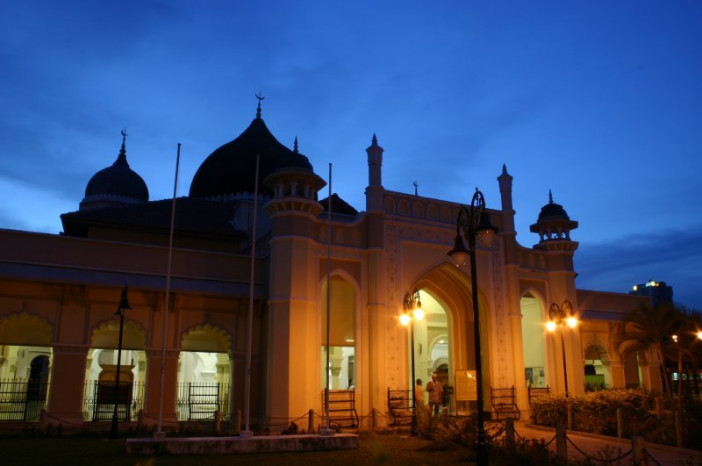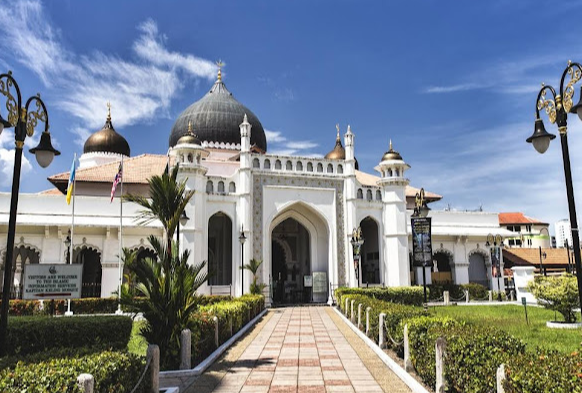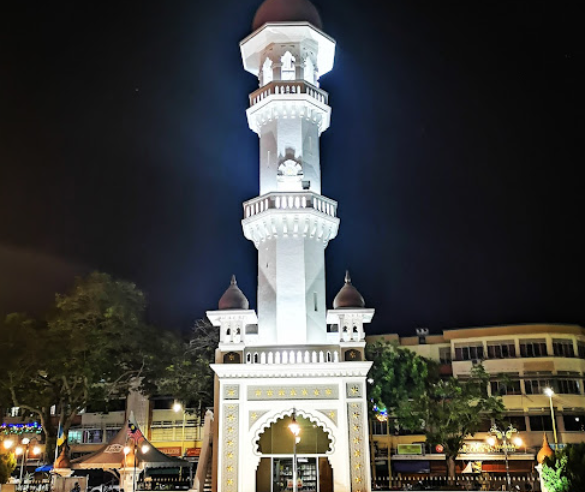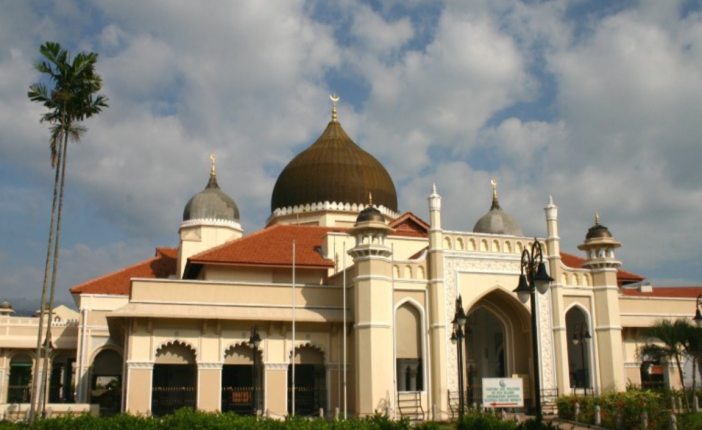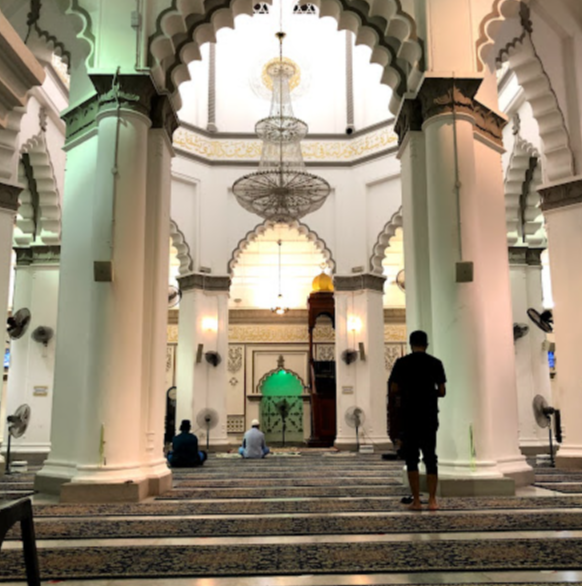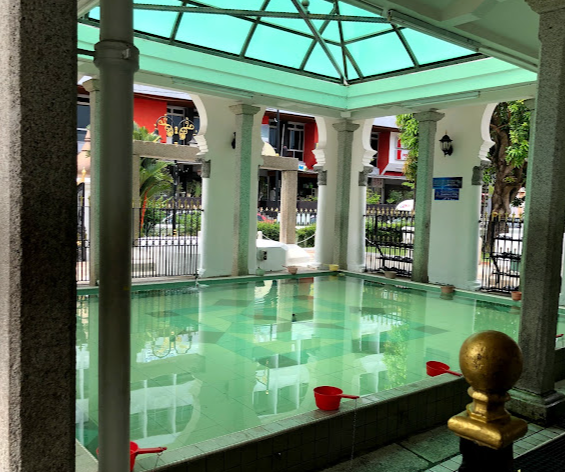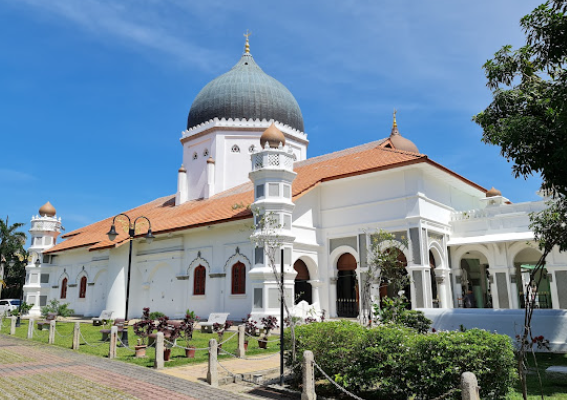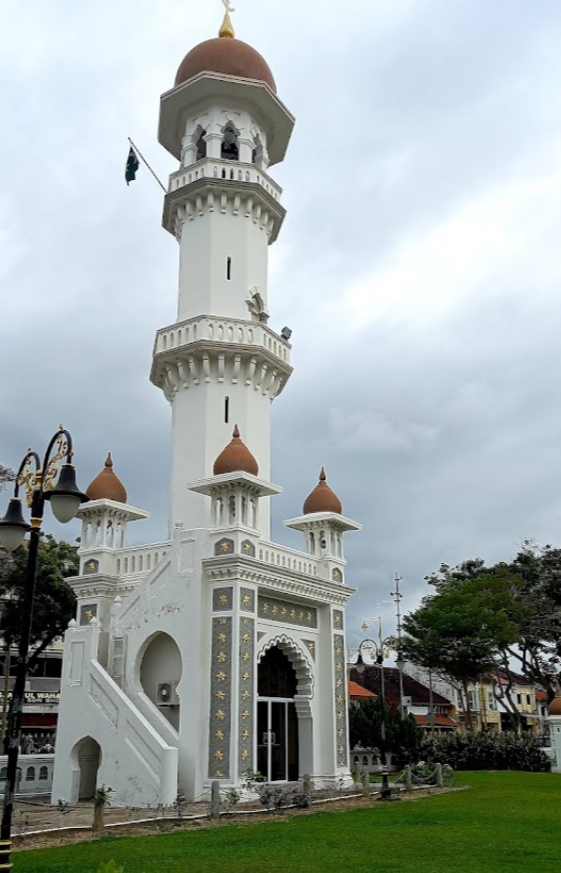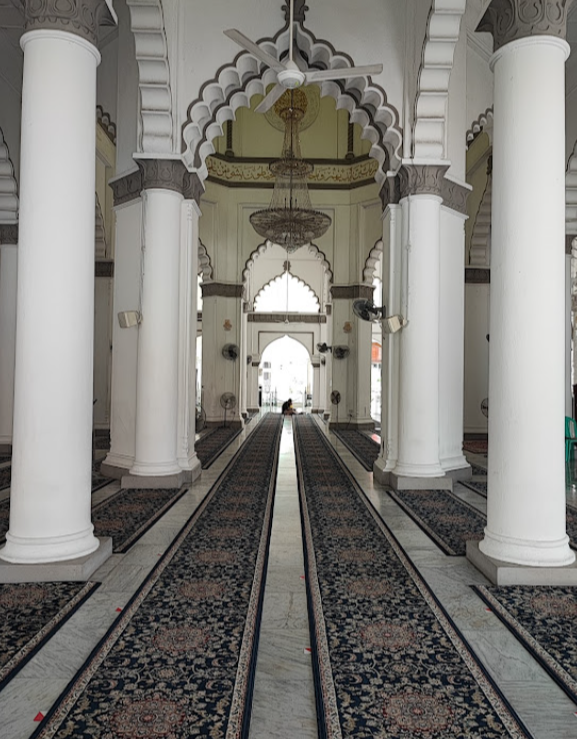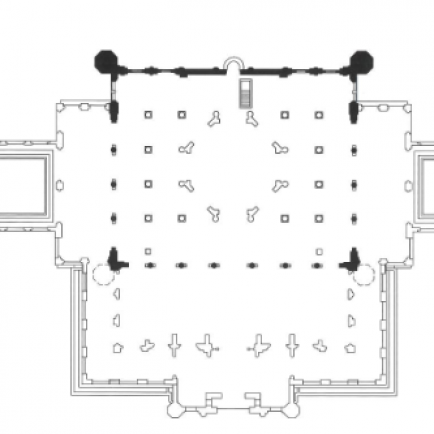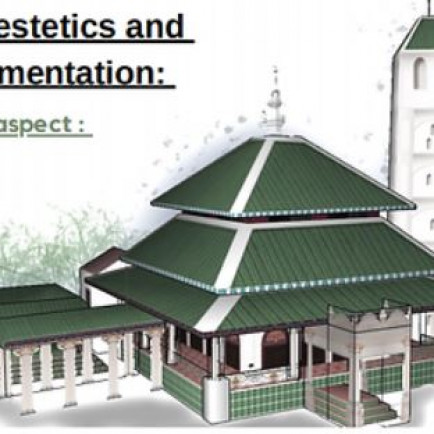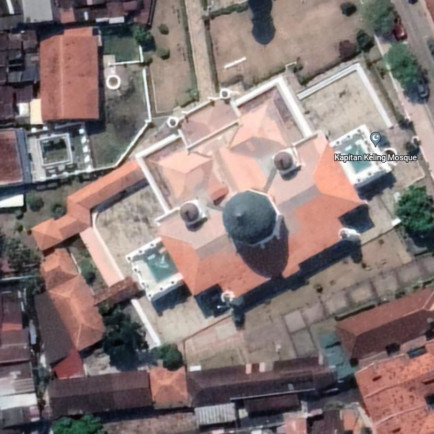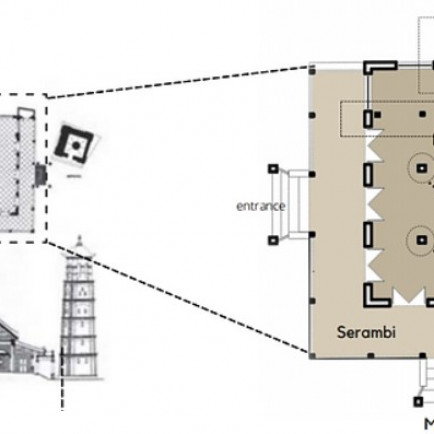Kapitan Keling Mosque
History
Masjid Kapitan Keling is probably the most well-known mosque in the state of Pulau Pinang and on the mainland. Unlike earlier vernacular mosques in the region, it combines the influences of Indian-Mughal architecture with Gothic, Moorish and Roman Renaissance designs.
The mosque is named after Caudeer Mohideen Merican, popularly known as Kapitan Keling, the leader of the Indian Muslim community during the early 19th century. He was granted the 18-acre plot of land on which the mosque stands today by the Lieutenant-Governor of Pulau Pinang, Sir George Leigh in 1801. The mosque’s Moghul design was the creation of German architect Henry Alfred Neubronner.
The mosque, which is the largest historical mosque in the city of George Town, is located near many other historical places of worship on Kapitan Keling Street, also known as the ‘Street of Harmony’, which is part of UNESCO’s World Heritage sites in George Town. Masjid Kapitan Kling is listed as a heritage building by the National Heritage Department of Malaysia. The construction process involved builders and materials from India. Originally, the mosque’s structure took the form of a single-storeyed rectangular building with a sloping roof on all sides, encircled by a stone bench. It was surrounded by shophouses, with access provided by a narrow gateway. As the town’s population grew, encroachment and improper management led to the land belonging to the mosque shrinking in size, and private homes soon stood within a few feet of the mosque itself. By 1903, the original 18-acres site had been reduced to only eight acres.
In 1905, a waqf body was established by the government to monitor the management of the mosque. The mosque was subsequently given a major facelift in the British Moghul Revival style which was completed around 1916 and included the addition of Mughal domes and turrets, a large minaret and a madrasah. A major renovation in 1930 gave the Masjid Kapitan Kling its present appearance as the previous design was deemed to be impractical.
Urban and Architectural
The mosque combines the influences of Indian-Moghal architecture with Gothic, Moorish and Roman Renaissance design.
The exterior is ochre yellowed while the interior had white marble floors and a high ceiling. The interior aisles are formed by a series of horseshoe arches, crowned with King Edward's plaques. The façade of the building and its interior were decorated with geometric designs, as human and animal forms are forbidden in Islam.
The exterior walls were painted with ochre yellowed colour and the domes originally ochre yellow – are clad in a black coating. The original Marseilles clay roof tiles have been restored, with a Shanghai plaste finish on the western annexe walls. The mosque houses a small madrasah and an information centre within its compound area, as well as a minaret, a green area, a covered walkway and ablution facilities. The general area of the interior has been renovated.
The main prayer hall area is finished with white marble flooring and a high ceiling. The interior spaces are characterised by aisles formed by a series of horseshoe arches embellished with the plumes of King Edward. Geometrical arabesque patterns adorn both the facade and interior space. The original form of the mihrab remains intact and takes the form of a low-niche space in the concrete wall. It sports shades of white and grey, and is adorned with golden calligraphic inscriptions which were added in 2003. A new wooden platform and stairs was installed to become the minbar.Description
The Kapitan Keling Mosque is a mosque built in the 19th century by Indian Muslim traders in George Town, Penang, Malaysia.
Details
Location
14, Jalan Buckingham, George Town, 10200 George Town, Pulau Pinang, Malaysia
Worshippers
750
Owners
Cauder Mohuddeen Merican
Architect Name
Year of Build
1801
Area
1,570.46 m², 8 acres total
Drawings
Map
History
Masjid Kapitan Keling is probably the most well-known mosque in the state of Pulau Pinang and on the mainland. Unlike earlier vernacular mosques in the region, it combines the influences of Indian-Mughal architecture with Gothic, Moorish and Roman Renaissance designs.
The mosque is named after Caudeer Mohideen Merican, popularly known as Kapitan Keling, the leader of the Indian Muslim community during the early 19th century. He was granted the 18-acre plot of land on which the mosque stands today by the Lieutenant-Governor of Pulau Pinang, Sir George Leigh in 1801. The mosque’s Moghul design was the creation of German architect Henry Alfred Neubronner.
The mosque, which is the largest historical mosque in the city of George Town, is located near many other historical places of worship on Kapitan Keling Street, also known as the ‘Street of Harmony’, which is part of UNESCO’s World Heritage sites in George Town. Masjid Kapitan Kling is listed as a heritage building by the National Heritage Department of Malaysia. The construction process involved builders and materials from India. Originally, the mosque’s structure took the form of a single-storeyed rectangular building with a sloping roof on all sides, encircled by a stone bench. It was surrounded by shophouses, with access provided by a narrow gateway. As the town’s population grew, encroachment and improper management led to the land belonging to the mosque shrinking in size, and private homes soon stood within a few feet of the mosque itself. By 1903, the original 18-acres site had been reduced to only eight acres.
In 1905, a waqf body was established by the government to monitor the management of the mosque. The mosque was subsequently given a major facelift in the British Moghul Revival style which was completed around 1916 and included the addition of Mughal domes and turrets, a large minaret and a madrasah. A major renovation in 1930 gave the Masjid Kapitan Kling its present appearance as the previous design was deemed to be impractical.
Urban and Architectural
The mosque combines the influences of Indian-Moghal architecture with Gothic, Moorish and Roman Renaissance design.
The exterior is ochre yellowed while the interior had white marble floors and a high ceiling. The interior aisles are formed by a series of horseshoe arches, crowned with King Edward's plaques. The façade of the building and its interior were decorated with geometric designs, as human and animal forms are forbidden in Islam.
The exterior walls were painted with ochre yellowed colour and the domes originally ochre yellow – are clad in a black coating. The original Marseilles clay roof tiles have been restored, with a Shanghai plaste finish on the western annexe walls. The mosque houses a small madrasah and an information centre within its compound area, as well as a minaret, a green area, a covered walkway and ablution facilities. The general area of the interior has been renovated.
The main prayer hall area is finished with white marble flooring and a high ceiling. The interior spaces are characterised by aisles formed by a series of horseshoe arches embellished with the plumes of King Edward. Geometrical arabesque patterns adorn both the facade and interior space. The original form of the mihrab remains intact and takes the form of a low-niche space in the concrete wall. It sports shades of white and grey, and is adorned with golden calligraphic inscriptions which were added in 2003. A new wooden platform and stairs was installed to become the minbar.Description
The Kapitan Keling Mosque is a mosque built in the 19th century by Indian Muslim traders in George Town, Penang, Malaysia.


